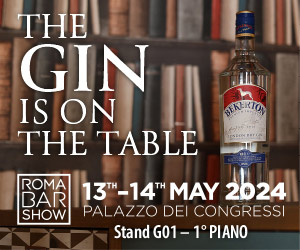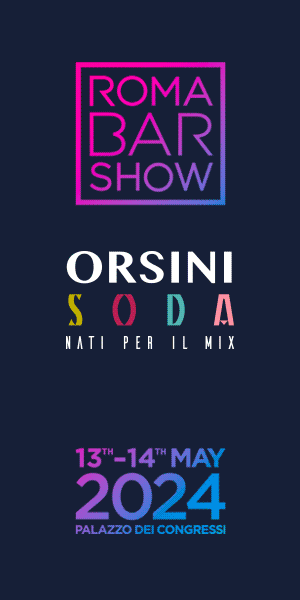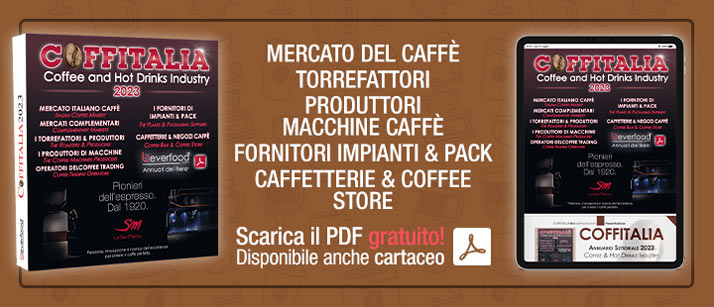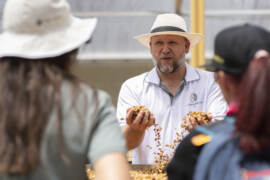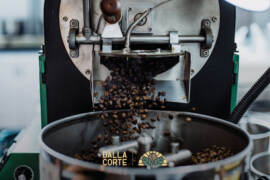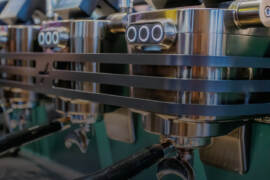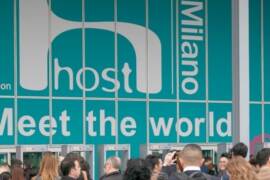Un interessante intervento del dc coffee pro Kim Ossenblok* (nella foto). Com’è cambiata l’estrazione dell’espresso negli ultimi 5 anni (e cosa deve sapere ogni barista).

Cosa si aspetta il cliente quando entra a bere un caffè nel vostro bar? La maggior parte delle persone desidera sentirsi accolta e potersi gustare un buon caffè in un luogo confortevole.
Ciò non ha nulla a che fare con il caffè in sé, anche se il sapore e la forza di questa bevanda sono fattori molto importanti per soddisfare la clientela. Attenzione, però: non tutti hanno le vostre aspettative in tema di gusto! Queste, inoltre, cambiano molto a seconda della cultura locale.
Nell’Europa meridionale, ad esempio, è molto gradito un caffè dal gusto forte e dalla bassa acidità, con gran corpo e molta crema (espresso). A Nord, invece, si preferiscono caffè dal corpo più leggero e maggiore acidità (caffè filtro).
Come baristi siete tenuti a saper adattare il profilo in tazza alle abitudini di consumo dei clienti… ma al tempo stesso migliorarlo rendendolo più dolce e coerente.
Per questo motivo è importante innanzitutto essere consapevoli dei sapori e della forza della bevanda di caffè che sono maggiormente accettati e compresi nella cultura del vostro paese.
Il secondo passaggio consiste nello scegliere la miscela/mono-origine e il profilo di tostatura più adatti a soddisfare tali aspettative.
Come terza cosa, dovete creare una vostra personale formula per l’estrazione dell’espresso per ottenere un eccellente risultato in tazza e, infine, iniziare a educare i clienti che si dimostrano più interessati al mondo del caffè.
Il problema principale per noi baristi e proprietari di bar è che non adattiamo la nostra “formula per l’estrazione dell’espresso” ai bisogni del nostro locale.
Così facendo, c’è il rischio che i clienti ‘non capiscano’ cosa tentiamo di vendere. È molto frustrante, perché sappiamo che stiamo preparando un caffè di alta qualità con il migliore sapore possibile … per loro!
Ma allora cosa possiamo fare oggi per migliorare l’esperienza di consumo? Prima di tutto dobbiamo cercare di capire che tipo di sapori apprezzano i clienti… che si tratti di cioccolato, noce e vaniglia, oppure frutti rossi, acidità citrica o di aromi floreali. Una volta coscienti di ciò, possiamo selezionare il caffè da acquistare per la nostra miscela espresso.
D’accordo: ma che cosa significa esattamente “formula per l’estrazione dell’espresso” (dall’inglese “Espresso Brew Formula” (EBF)”? È il rapporto tra la quantità di liquido di caffè in tazza e il caffè macinato presente nel filtro della macchina per espresso. Bilance di precisione permettono di misurare il peso in grammi sia del liquido che della polvere di caffè. Così facendo, regoliamo la nostra formula per l’espresso in modo più coerente e…decidiamo qual è la ‘forza’ ideale del nostro espresso!
Per farvi meglio capire il concetto, permettetemi di spiegarvi la differenza che intercorre tra un caffè ristretto, un espresso e un caffè lungo…
Nell’espresso italiano originale si utilizzavano 7 grammi di caffè per ottenere 14 grammi di espresso (liquido) in tazza. Ciò significa che ogni grammo di caffè macinato si trasforma in 2 grammi di liquido: la bevanda finale sarà dunque un espresso forte con una formula di estrazione (EBF) del 50%.
Oggigiorno molti proprietari di bar usano 7 grammi di caffè per espresso (producendo quindi 144 caffè con un kg di macinato), ma nessuno considera quanti grammi di liquido si ottengono in tazza. Molti baristi trasformano questi 7 grammi di macinato in 28 grammi di liquido per ciascun espresso, quindi ogni grammo di polvere di caffè produce 4 grammi di liquido in tazza. Si tratta di una EBF del 25%, più leggera e corrispondente al classico “caffè lungo”.
Parlando, poi, con i baristi che partecipano alle gare baristi di tutto il mondo, scopriamo che usano fino a 10 grammi di caffè macinato per produrre solo 15 grammi di espresso in tazza.
Il che corrisponderebbe a una EBF di 1/1,5 = 66%, ovvero al “caffè ristretto”.
Se il concetto vi è nuovo, potrebbe non essere semplice capirlo. Non preoccupatevi e rileggete questo articolo un paio di volte: è probabilmente una delle cose più importanti da imparare nella scienza dell’estrazione dell’espresso.
E se davvero volete fare un salto di qualità, potreste iniziare a regolare la macchina espresso usando delle bilance al posto dei bicchierini: vedrete che cambiamento!
Un espresso che ha una formula EBF con una percentuale bassa avrà un corpo meno consistente e sapori meno intensi. Ciò non ha niente a che fare con il tipo di aromi, ma solo con la loro intensità e con la sensazione prodotta al palato.
Il caffè ristretto ha un sapore molto intenso, un corpo cremoso e molto denso, mentre il caffè lungo ha un sapore più morbido e dà una sensazione al palato più ‘acquosa’.
Per comprendere meglio quale sia la cultura del caffè dominante nella vostra zona, vi consiglio di fare un test con i vostri clienti: offrite loro tre varianti dello stesso caffè, in cui il tempo di estrazione rimane invariato (in modo da mantenere la qualità e la varietà degli aromi) ma cambia, invece, la EBF.
Certo, dovrete regolare il macinacaffè ogni volta, ma sono certo che voi baristi di eccellenza ne capirete la necessità!
Come si valorizzano al meglio i gusti presenti nell’espresso?
Per prima cosa dobbiamo capire come estrarre al meglio i sapori dai nostri chicchi tostati.
Pensate a un chicco di caffè come a una ‘perla’ legnosa dove sapori e aromi sono intrappolati in olii e fibre. Questi aromi sono solubili in acqua, quindi possiamo ritrovarli e gustarli nel caffè dopo l’estrazione. La parte solubile costituisce circa il 30% del chicco, mentre il restante 70% è fatto di fibre e non è solubile in acqua. Il problema è che non tutte le parti solubili hanno un buon sapore. Se estraiamo circa il 20% delle parti solubili del nostro chicco, la bevanda finale sarà bilanciata. Se ne estraiamo meno, il caffè risulterà sottoestratto, salato e molto acido. Se, invece, ne estraiamo di più, si produrranno sapori amari (e legnosi) che lasceranno in bocca un retrogusto secco e astringente.
Regolare il tempo di estrazione ben comprendendo il funzionamento del macinacaffè è, quindi, un aspetto fondamentale per esaltare al meglio i gusti del vostro caffè e ciò dipenderà molto dal tipo di chicco e dal suo profilo di tostatura.
Ora che sappiamo quanto caffè estraiamo dal chicco e quanto liquido otteniamo in tazza… possiamo passare al livello successivo!
Possiamo misurare il rapporto tra il caffè disciolto e il liquido. In altre parole, possiamo capire quanti grammi di particelle di caffè sono disciolte nell’acqua.
La quantità totale di particelle disciolte nell’acqua si misura con strumenti di laboratorio molto costosi come il misuratore TDS o il rifrattometro per caffè. Con questi strumenti possiamo analizzare in modo molto dettagliato quanto ‘forte’ sarà il nostro espresso. In tal modo, i baristi esperti potranno regolare la granulometria, la temperatura e la pressione dell’acqua per ottenere il caffè perfetto per i propri clienti.
In una prossima occasione spiegheremo perché e come va regolato il macinacaffè…
*Kim Ossenblok fa parte dei dc coffee pro, i migliori professionisti del caffe al mondo, selezionati da Dalla Corte per condividere e trasmettere la propria esperienza e cultura a professionisti e coffee lovers.
+info: – www.dallacorte.com/
SCHEDA DI APPROFONDIMENTO E ALTRE NEWS DALLA CORTE
How espresso brewing changed the last 5 years (and what every barista need to know) by Kim Ossenblok, dc coffee pro*
What is our customer expecting when they go to drink a coffee in your shop? What most people want to experience when they enter your shop is “feeling welcome” and having a nice coffee to enjoy, in a comfortable place.
This has nothing to do with the coffee drink in itself, but the flavor and the strength of the coffee is a very important issue to satisfy your costumers. Not everybody has the same expectation of taste than you, as a barista or coffee lover! And this depends a lot from the local culture differences.
For example in the south of Europe, people like to have a strong tasting “coffee” with lower acidity, high body and lots of crema (espresso). In northern countries people like to drink more light bodied coffees with acidic flavors (filter).
As a barista you need to know how to adjust the flavor profile in the cup to what your clients are used to drink, but… much, much better, sweeter and more consistent.
Thats why its so important to first understand the flavors and strength that are most likely to be accepted and understood in your culture.
The second step is choosing an espresso blend or single origin and roast profile, so you can meet flavor expectation.
The third step is creating your espresso brew formula to extract excellent espresso and after that, you can start educating the people who are showing more interest in coffee culture.
The main problem we as baristas and coffee shop owners have, is that we do not adjust the “espresso brew formula” to the needs of your coffeeshop.
The risk is your clients “do not understand” what you try to sell. Its very frustrating, because you know you are preparing great coffee with the best flavor possible… for them!
So what can we do today, to make the experience better. First of all try to understand what type of flavors your clients like… maybe chocolate, nuts and vanilla flavors, more red fruits, or citric acidity and floral aromas. When you know this, we can select the coffee you want to buy for your espresso blend.
Ok, but what does “espresso brew formula” exactly mean? It’s the relationship between the quantity of liquid coffee measured in the cup and the ground coffee used in the basket of the porta filter in your espresso machine. We use precision scales to measure the weight of both (liquid and ground) in grams to adjust our espresso brew formula more consistently and… decide the ideal strength of your espresso!
To understand this better let me explain the difference between a ristretto, espresso and lungo…
The original espresso Italiano was made with 7 grams of coffee and 14 grams of espresso (liquid) in the cup. This means that each gram of ground coffee is transformed in 2 grams of liquid. This is a strong espresso with a brew formula of 50%, but…
Lots of bar owners are been sold on the idea to use only 7 grams per espresso (so they got 144 coffees from one kg) but nobody is talking about how many weight (liquid) we have in our cup. So most baristas transform this 7 grams to 28 grams of liquid per espresso, so each gram is transformed in 4 grams of liquid. This results in a lighter “Espresso Brew Formula” of 25% or the classical “lungo”.
If we talk to the baristas who are competing in barista championships around the world, they use up to 10 grams of ground coffee and transform this into only 15 grams of espresso in the cup.
This means we have a “Espresso Brew Formula” (EBF) of 1/1,5 = 66% or “ristretto”.
Ok, if this is the first time you hear about this concept, it’s probably not so easy to understand. But, please… do not worry, just read this article a few more times, because this is probably one of the most important things you will learn in espresso brewing science.
And if you really want to take this to the next level, you can start using scales instead of shot glasses to adjust your grinder, and you’ll see big changes!
So if we drink an espresso with a low “EBF”, you will experience lower body and lower intensity in flavor. and viceversa. This does has nothing to do with the type of flavors, but only the intensity of the flavor and the mouthfeel!
The ristretto has a very intense flavor and high creamy body while the lungo is smoother in flavor and has a weaker body and a more “watery” mouthfeel.
To understand better the coffee culture in your area, I suggest to do a test with your clients and offer them the same coffee with 3 different “EBF” with the same extraction time to maintain the quality and variety of flavors identical.
You will need to adjust the grinder each time but you as an excellent barista know what I am talking about!
But how you can get the best flavors out of your espresso?
We need to understand first how we extract the best flavors from our roasted coffee beans… Think of an espresso bean as a wooden “pearl” with aromas and flavors trapped in the coffee oils & fibers. These aromas are soluble in water so we can enjoy them in the coffee after brewing. The soluble part of this bean is around 30% but the other 70% are bean fibers and not soluble in water. The problem is, not all the soluble parts taste well. If we extract around 20% of the solubles out of our coffee bean, its going to be balanced, if we extract less, your coffee its going to taste under extracted, salty and very acidic. If we extract more, the bitter (and woody) tastes will appear and will leave us with dry, astringent aftertaste.
So adjusting the extraction time by understanding your grinder is going to be a key aspect too get the best flavors out of your coffee. And this is going to depend a lot of the type of bean and roast profile.
Now we know how much coffee we extracted of our bean and how much liquid we have in our cup… we can go a little more advanced!
We can measure the relationship between the dissolved coffee and the liquid. In other words, how much grams of coffee particles are dissolved in the water.
The total quantity of coffee particles dissolved in our water is measured with very expensive laboratorio tools as the TDS meter or coffee refractometer. With this tools we can measure the “strength” of our espresso beverage and analyze very detailed, how “strong” our espresso is going to taste. This way the experienced baristas can adjust the grind size, temperature and pressure to obtain the ideal coffee drink we want to serve our clients.
Why and how you can adjust your grinder, we will explain in detail next time…
* Kim Ossenblok is one of dc coffee pros, the best coffee professionals in the world, selected by Dalla Corte to share and convey their experience and culture.
+info: – www.dallacorte.com/
WEB PAGE AND NEWS DALLA CORTE
